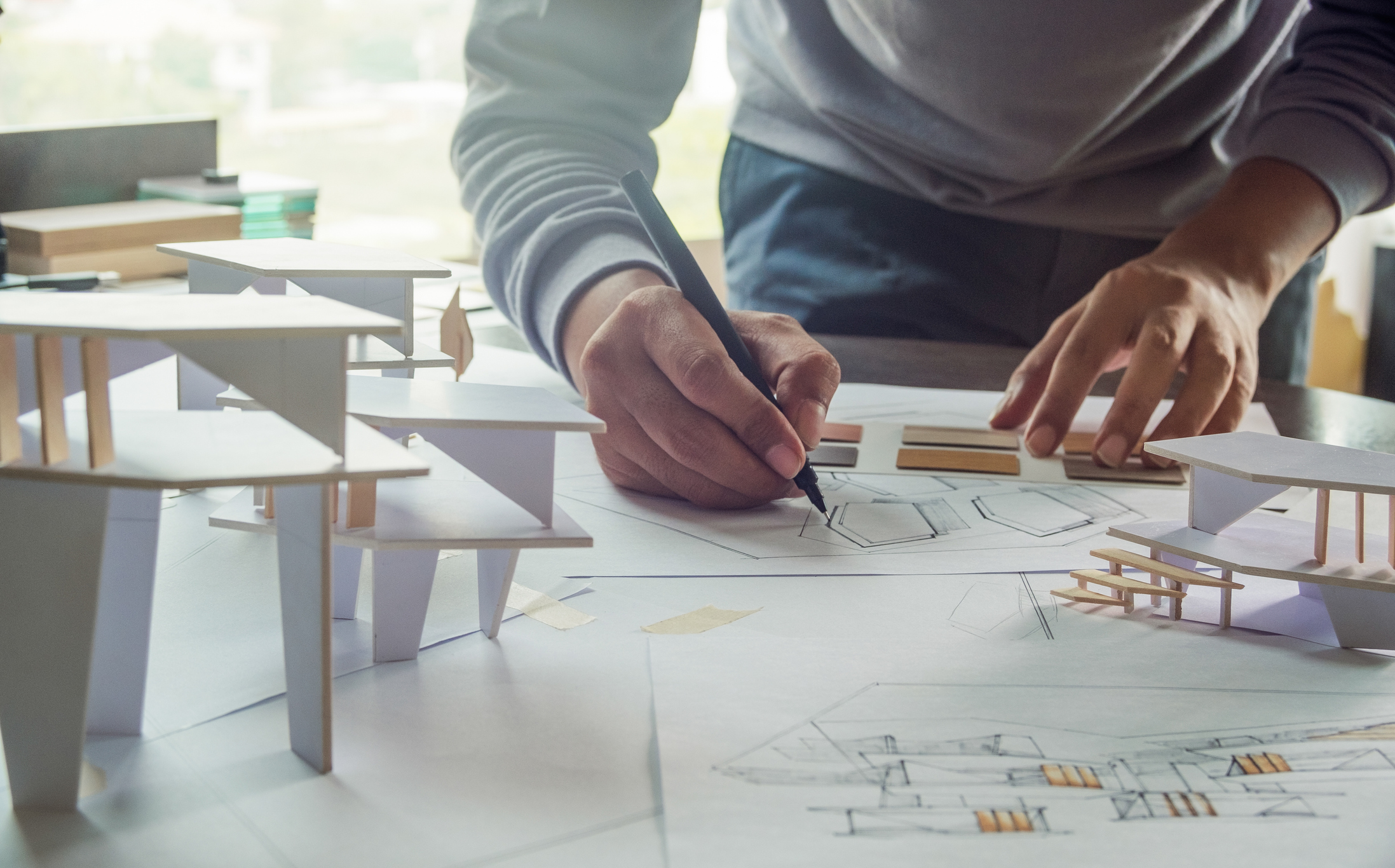Architect Workflow Enhancement for Faster Project Delivery
Architect Workflow Enhancement for Faster Project Delivery
Blog Article
Recognizing the Diverse Profession Paths Available for Aspiring Architect
As a hopeful Architect, you have a globe of profession paths waiting for you. Whether you're drawn to conventional architecture or the subtleties of lasting style, there's a particular niche that lines up with your passions.
Traditional Style: Designing Frameworks and structures
Traditional architecture concentrates on making structures and frameworks that mix functionality with visual charm. As you explore this area, you'll appreciate the complex balance between kind and function. You'll discover to attract ideas from historic designs, including components like symmetry, products, and workmanship. Your styles can mirror cultural heritage, showcasing local traditions while fulfilling modern-day needs.
You'll create skills in composing, model-making, and site analysis, permitting you to visualize and communicate your ideas successfully. Engaging with customers, you'll require to recognize their vision and convert it right into practical layouts.
Moreover, building codes and sustainability practices are important in your work, ensuring your frameworks are environmentally friendly and safe. As you grow in your job, you'll discover possibilities in residential, industrial, or perhaps repair projects, each offering one-of-a-kind challenges. Welcoming typical design leads the means for a meeting job that admires the past while forming the future.
Urban Preparation: Shaping Areas and Public Spaces
As an ambitious Architect, you can play an important function as a metropolitan organizer, transforming how communities function and interact. By using neighborhood involvement approaches, you'll assure that homeowners have a voice in forming their environment. And also, integrating sustainable style concepts will assist create rooms that not just satisfy today's demands yet additionally secure the future.
Role of Urban Planners
While lots of could think of designers as the single dreamers behind structures, metropolitan organizers play an important role in shaping the broader landscape of areas and public rooms. By teaming up with various stakeholders, you'll assist make parks, transport systems, and household locations that advertise social communication and availability. Your experience in spatial style and area dynamics permits you to envision future growth while maintaining social heritage.
Area Involvement Techniques
Effective neighborhood involvement strategies are vital for metropolitan coordinators to guarantee that the voices of residents are listened to and valued in the preparation procedure. To foster purposeful discussion, you ought to focus on open discussion forums and workshops where community members can reveal their concepts and problems. Usage studies and social networks to get to a broader target market, ensuring varied point of views are included. Collaborating with regional companies can boost trust fund and promote deeper links. It's important to give clear details concerning decision-making processes and suggested jobs, permitting residents to really feel informed and equipped. By proactively paying attention and integrating feedback, you'll produce spaces that show the community's needs, inevitably resulting in even more lasting and successful metropolitan settings. Accept transparency and continuous discussion for long-term effect.
Sustainable Design Concepts
When designing urban rooms, integrating lasting design concepts is critical for creating atmospheres that grow both ecologically and socially. You need to start by concentrating on energy efficiency, making use of materials that decrease waste and advertise recycling. Take into consideration integrating environment-friendly areas, like yards and parks, to improve biodiversity and improve air high quality. Promoting walkability and public transport can decrease dependence on autos, fostering a much healthier area.
Designing with water preservation in mind is likewise crucial-- think regarding rain yards and absorptive surface areas to take care of stormwater. Involving community members throughout the preparation procedure assurances that the areas you create satisfy their requirements and motivate social communication. By embracing these concepts, you'll contribute to vivid, sustainable urban landscapes that benefit everybody.

Landscape Style: Creating Sustainable Exterior Atmospheres
As you explore landscape style, you'll find important design concepts that develop practical and stunning exterior rooms. Lasting practices play an essential function in making sure these environments flourish while reducing ecological effect. Plus, you'll locate a range of profession opportunities that enable you to make a genuine difference in exactly how people interact with nature.
Style Concepts in Landscape
Understanding style principles in landscape design is essential for creating sustainable exterior settings that integrate with nature. You'll require to consider elements like scale, balance, and proportion to guarantee your styles really feel natural and welcoming. Incorporating native plants not only enhances biodiversity but also reduces water use, making your landscape resilient. Consider the circulation of area and how individuals communicate with it; paths and seating locations should welcome expedition and relaxation. Additionally, focus on seasonal adjustments, designing with materials that enhance the surroundings year-round (Architect). By focusing on sustainability and aesthetic appeals, you can develop exterior spaces that improve the area and advertise wellness. Welcoming these principles will certainly establish a strong foundation for your occupation in landscape architecture.
Sustainable Practices Review
Lasting techniques in landscape style not just concentrate on aesthetics but additionally focus on eco-friendly wellness and resource preservation. You can create areas that promote dirt health and wellness, such as practicing and utilizing natural materials permaculture concepts. Ultimately, these techniques guarantee your styles benefit both individuals and the setting for years to come.
Profession Opportunities Expedition
With a strong structure in sustainable practices, landscape architecture provides a range of occupation courses that enable you to make a meaningful effect on the environment. Urban planners typically team up with landscape engineers to create green areas in city settings, enhancing city livability. If you're enthusiastic about education, consider ending up being a landscape design educator, inspiring future generations.
Lasting Style: Focusing on Eco-Friendly Practices
As you discover your job in architecture, embracing green methods can establish you apart in an affordable field. Sustainable layout concentrates on producing buildings that minimize environmental impact while improving occupant health. By incorporating sustainable products, energy-efficient systems, and lasting building methods, you'll contribute to a greener future.
Start by gaining knowledge of environment-friendly certifications like LEED or BREEAM, which can boost your qualifications. Think about how all-natural light, air flow, and thermal performance can maximize style. Team up with engineers and ecological specialists to introduce options that lower waste and this article conserve resources.
Don't forget the value of neighborhood involvement-- appealing regional stakeholders can motivate styles that balance with the environment. As customers progressively focus on sustainability, your expertise in environment-friendly practices will certainly not just attract tasks yet additionally fulfill your passion for accountable architecture. Accept this critical facet of the career, and enjoy your job prosper.
Historic Preservation: Protecting and Bring Back Social Heritage
While you start on your building trip, consider the necessary role of historic conservation in maintaining our social heritage. This field concentrates on the protection and reconstruction of considerable structures, websites, and frameworks that tell the stories of our past. By participating in historical conservation, you'll help protect the architectural legacy that shapes area identity.
As a historical preservation Architect, you'll examine historic importance and analyze the condition of structures. You'll function closely with guardians and chroniclers to assure genuine reconstruction strategies are used. This profession path allows you to mix creativity with research study, allowing you to develop services that appreciate initial materials and craftsmanship.
Your job not only adds to sustainability by recycling existing buildings but likewise cultivates a sense of satisfaction within areas. Accepting this path will help you become a guardian of history, protecting the stories and aesthetic appeals that enrich our lives.
Interior Style: Enhancing Indoor Spaces
Historical conservation and interior style both share a commitment to boosting the built setting, but they focus on various aspects. While historical conservation stresses keeping a framework's social and historical value, interior style zeroes in on maximizing indoor spaces for capability and visual appeals.
As an aspiring Architect, you'll locate that interior design allows you to mix creative thinking with technological abilities. You'll design spaces that not just look good but likewise promote comfort and performance. This field includes comprehending how light, color, and materials connect within an area, influencing state of mind and use.
You'll deal with different tasks, from household homes to commercial workplaces, making certain that each environment meets the needs of its owners. By prioritizing customer experience, you can change insides right into motivating and functional areas, making a substantial effect on exactly how people interact with their surroundings. Accept the chance to enhance indoor atmospheres and shape the means people live and work.
Industrial Style: Merging Performance With Aesthetics
Commercial style plays an important duty in producing products that flawlessly blend looks with functionality, guaranteeing that what you make use of everyday is not just visually enticing however likewise practical. As a hopeful Architect, you can involve on your own in this field, concentrating on making whatever from furnishings to consumer electronic devices. Your work entails understanding individual needs, products, and producing processes, allowing you to develop cutting-edge remedies that boost everyday experiences.
In industrial layout, you'll frequently work together with manufacturers, designers, and online marketers, guaranteeing that your designs are not only beautiful yet additionally practical. This job course supplies a vibrant setting where creativity fulfills practicality, making it a gratifying choice for architects interested in forming the products of tomorrow.
Often Asked Questions
What Educational Accreditations Do I Required to Come To Be a Designer?
To become an engineer, you'll require a professional level in architecture, typically a Bachelor's or Master's. Furthermore, you'll need to complete a teaching fellowship and you could look here pass the Architect Enrollment Assessment to practice legitimately.
Exist Accreditation Requirements for Different Building Career Paths?
Yes, there're certification needs for various architectural courses. Architect. You'll need to pass tests, total internships, and occasionally pursue specialized training, depending upon your chosen focus, like landscape style, urban style, or historic conservation
What Software Program Skills Are Essential for Designers Today?

Exactly How Can I Gain Practical Experience While Examining Design?
You can get useful experience by interning at building firms, getting involved in layout competitions, offering for neighborhood jobs, or teaming up with classmates on real-world projects. These chances improve your abilities and build important connections in the industry.
What Task Opportunities Exist Outdoors Conventional Architecture Firms?
You can check out various work chances outside traditional style companies, like metropolitan planning, interior design, landscape style, building management, realty growth, and even roles in sustainability consulting. Each deals one-of-a-kind difficulties and rewards.
Whether you're attracted to traditional architecture or the nuances of sustainable layout, there's a specific niche that aligns with your interests.When designing metropolitan spaces, incorporating lasting style concepts is critical for developing environments that grow both environmentally and socially.As you discover landscape style, you'll uncover vital design concepts that develop gorgeous and useful outdoor spaces.Comprehending style principles in landscape design is necessary for producing sustainable outside settings that about his balance with nature.In commercial style, you'll usually collaborate with marketers, manufacturers, and designers, guaranteeing that your layouts are not only gorgeous however likewise feasible.
Report this page